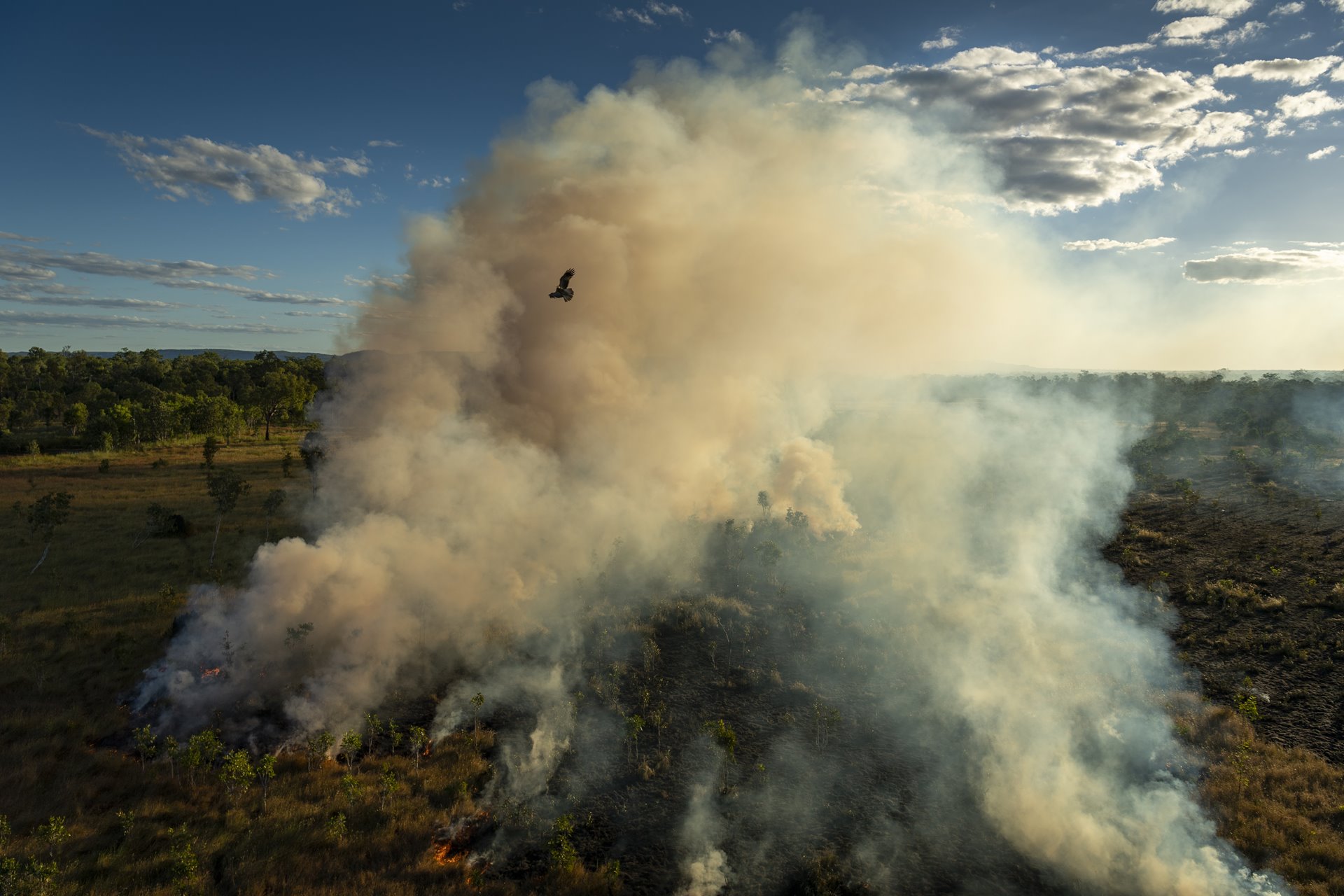A black kite (subspecies Affinis of Milvus migrans) flies above a cool-burn fire lit by hunters earlier in the day, in Mamadawerre, Arnhem Land, Australia. The raptor, also known as a firehawk, is native to Northern and Eastern Australia, and hunts near active fires, snatching up large insects, small mammals, and reptiles as they flee the flames.
Indigenous Australians have strategically burned land to protect their environment for tens of thousands of years. In a practice known as cool burning, fires move slowly, burn only the undergrowth, and remove the build-up of fuel that feeds bigger blazes. As a result, these traditional burns prevent larger, more destructive fires from occurring in the hotter, dryer months of the year. The Nawarddeken people, one of the traditional owners of West Arnhem Land in the north of Australia, see fire as a way to rejuvenate the land, and use it as a tool to manage their 1.39 million hectare homeland. Warddeken rangers use traditional knowledge and combine it with contemporary technologies such as aerial burning and digital mapping to prevent wildfires. In doing so, they have successfully decreased the amount of climate-heating CO2. The emissions saved earn carbon credits, and the proceeds are invested in the community and environmental projects.
The photographer is an Australian who once lived in West Arnhem Land and was accepted into a local community. He sees sharing the Warddeken rangers’ solution to wildfires important due to the climate crisis and the intensive bushfires Australia has seen in recent years.

